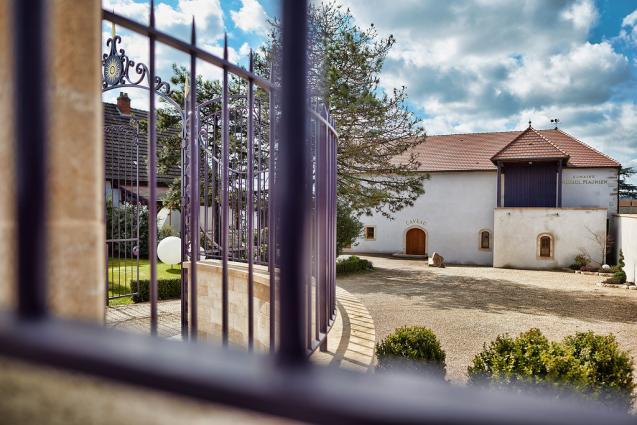Michel Magnien Clos Saint Denis
Michel Magnien Clos Saint Denis
Domaine Michel Magnien has evolved into a Burgundy producer of a singular style and philosophy from cellars located in the village of Morey-Saint-Denis. In 1993, Frédéric Magnien persuaded his father Michel to begin domaine bottling. The domaine is now certified biodynamic by Demeter and the wines are produced without the use of new oak
The domaine’s 45 acres are spread across the villages of Morey-Saint-Denis, Gevrey-Chambertin, Chambolle-Musigny, and Vosne Romanée, with holdings in several premier cru and grand cru vineyards. These include the grand crus Clos de la Roche, Clos Saint-Denis, and Charmes-Chambertin. Frédéric Magnien maintains an average vine age of 50 years
Clos-Saint-Denis Grand Cru is the namesake vineyard of the village of Morey and lies adjacent to Clos de la Roche. The vineyard is planted on clay-limestone soil with a mixture of iron oxide, and gives the most finesse and delicacy of Morey’s five grand crus. The wine is a pure expression of its terroir thanks to its élevage in a combination of used oak and clay jars.
Tasting Notes
Despite its proximity to Clos de la Roche, Clos-Saint-Denis tends to be more like a wine from Chambolle-Musigny with a pretty fragrance of red fruits and flowers and a supple texture on the palate. While it typically shows finesse, a great Clos-Saint-Denis should have a great intensity of flavor and length.
Food Pairing
Red Burgundy might be the world’s most flexible food wine. The wine’s high acidity, medium body, medium alcohol, and low tannins make it very food-friendly. Red Burgundy, with its earthy and sometimes gamey character, is a classic partner to roasted game birds, grilled duck breast, and dishes that feature mushrooms, black truffles, or are rich in umami.
Domaine Michel Magnien has evolved into a Burgundy producer of a singular style and philosophy from cellars located in the village of Morey-Saint-Denis. In 1993, Frédéric Magnien persuaded his father Michel to begin domaine bottling. The domaine is now certified biodynamic by Demeter and the wines are produced without the use of new oak
The domaine’s 45 acres are spread across the villages of Morey-Saint-Denis, Gevrey-Chambertin, Chambolle-Musigny, and Vosne Romanée, with holdings in several premier cru and grand cru vineyards. These include the grand crus Clos de la Roche, Clos Saint-Denis, and Charmes-Chambertin. Frédéric Magnien maintains an average vine age of 50 years
Clos-Saint-Denis Grand Cru is the namesake vineyard of the village of Morey and lies adjacent to Clos de la Roche. The vineyard is planted on clay-limestone soil with a mixture of iron oxide, and gives the most finesse and delicacy of Morey’s five grand crus. The wine is a pure expression of its terroir thanks to its élevage in a combination of used oak and clay jars.
Tasting Notes
Despite its proximity to Clos de la Roche, Clos-Saint-Denis tends to be more like a wine from Chambolle-Musigny with a pretty fragrance of red fruits and flowers and a supple texture on the palate. While it typically shows finesse, a great Clos-Saint-Denis should have a great intensity of flavor and length.
Food Pairing
Red Burgundy might be the world’s most flexible food wine. The wine’s high acidity, medium body, medium alcohol, and low tannins make it very food-friendly. Red Burgundy, with its earthy and sometimes gamey character, is a classic partner to roasted game birds, grilled duck breast, and dishes that feature mushrooms, black truffles, or are rich in umami.




















